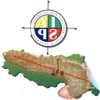Routine Intra-Operative Bile Culture and Drainage Fluid Culture as a Guide for Antibiotic Therapy in Pancreatic Surgery
Abstract
Context Despite improvement in mortality, surgical morbidity in pancreatic surgery remains high, and infectious complications have a main role. Objective To evaluate the role of intra-operative bile culture as a guide for post-operative antibiotic therapy in case of infectious complications. Methods From January 2010 to June 2012 we realized 136 pancreaticoduodenectomies for periampullary diseases. Intra-operative bile sampling and postoperative sampling from peri-pancreatic drainage fluid for culture were performed in 110 patients (81%) who were enrolled in this study. Forty-four patients (40%) experienced infectious complications (Group A) while 66 patients (60%) did not (Group B). Infectious surgical complications were: 31 POPFs (13 grade A, 18 grade B-C), 6 abdominal abscesses, 5 biliary fistulas, 1 gastro-duodenal fistula and 19 wound infections (some patients has more than one complication). Data were collected prospectively. Results Bile cultures resulted positive in 61/110 patients (56%), there were no differences in the rate of infected bile between the two Groups (57% vs. 55%); preoperative biliary stenting was strongly correlated with biliary infection (100% in stented patients vs. 18% in non-stented; P<0.001). Drainage fluid cultures resulted positive in 66/110 (61%) patients: in Group A they were positive in 40/44 patients (91%) while in Group B in 26/66 patients (40%) (P<0.05, chi-square test). In Group A negative drainage cultures belonged to patients who developed grade A POPF or wound infection. In Group B positive drainage cultures belonged to patients with infected bile in 62% of cases; in 19% of cases cultures were contaminated by skin germs (Staphylococcus). From drainage fluid culture, we isolated 102 germs (55 Gram +, 41 Gram -, 8 fungi) in Group A and 37 germs (26 Gram +, 11 Gram -) in Group B; 44/102 germs (43%) and 12/37 germs (32%) in Groups A and B, respectively were identical to that found in bile cultures. Conclusion In patients who develop abdominal infectious complications the high concordance between bile and drainage fluid cultures suggests that bile cultures can be useful as a guide for postoperative antibiotic therapy. The presence of infected bile can cause contamination of peritoneal fluid even in uncomplicated patients but it has no clinical relevance.
Downloads
Copyright (c) 2014 Barbara Fiore, Francesca Gavazzi, Cristina Ridolfi, Maria Rachele Angiolini, Alessandro Zerbi, Marco Montorsi

This work is licensed under a Creative Commons Attribution 4.0 International License.
As a member of Publisher International Linking Association, PILA, iMedPub Group’s JOP follows the Creative Commons Attribution License and Scholars Open Access publishing policies. Journal of the Pancreas is the Council Contributor Member of Council of Science Editors (CSE) and following the CSE slogan Education, Ethics, and Evidence for Editors.
